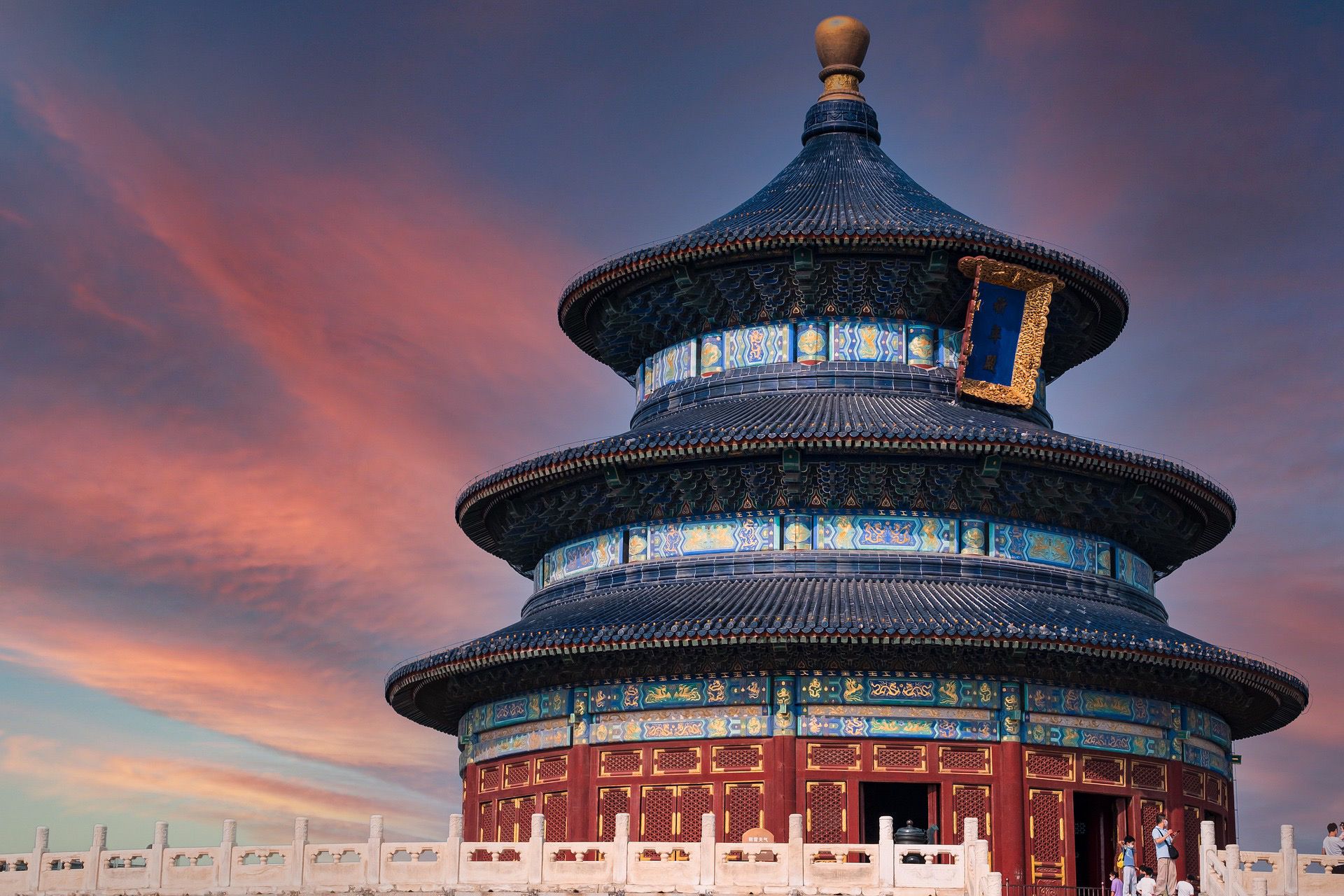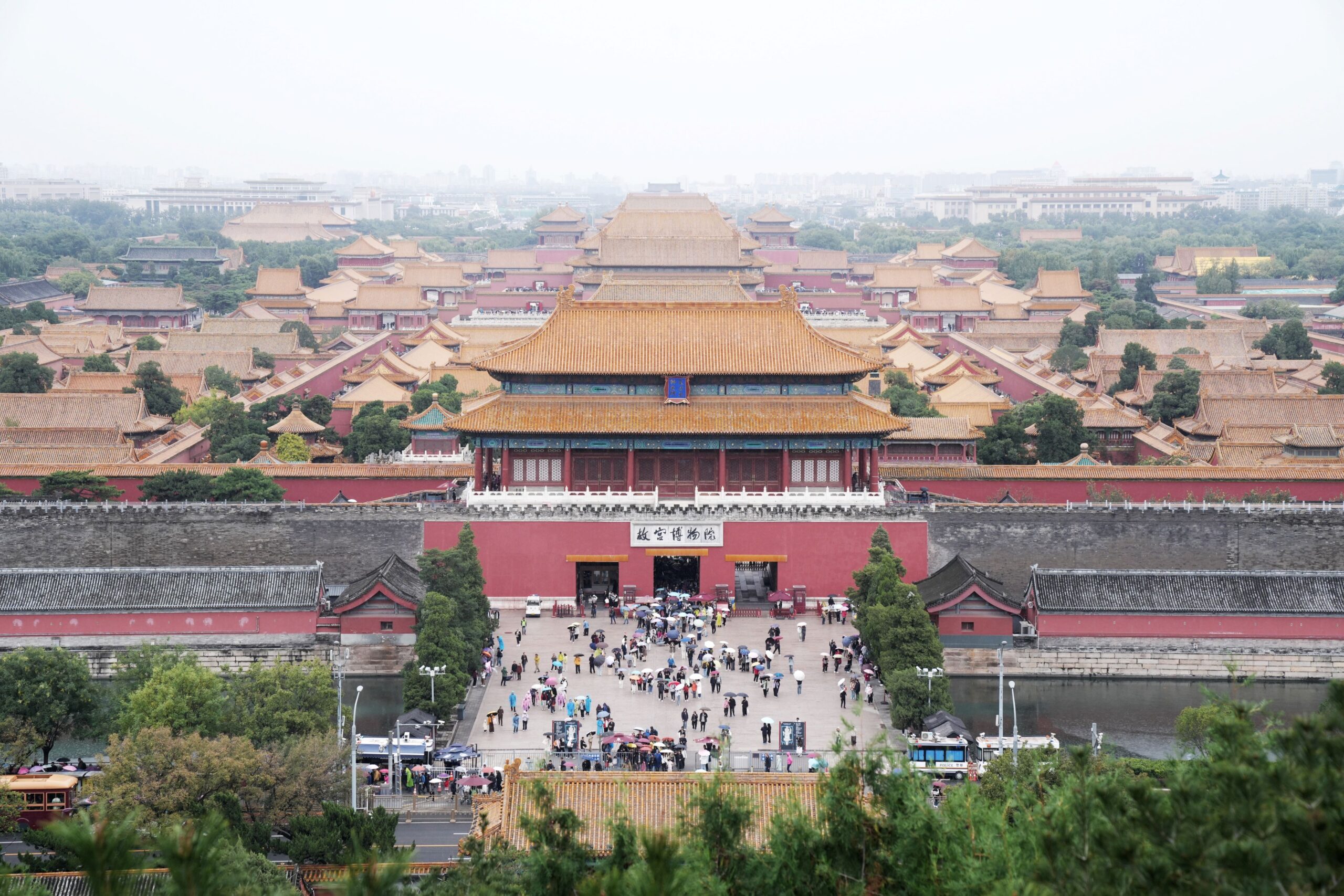China Minutes: 2024 Top 15 Chinese Cities for Inbound Tourism Oversea Influence.
With 700 million views in online searches, “China Travel” has reclaimed its place in the global spotlight, reflecting the swift rise of inbound tourism in the country post-pandemic. In the first half of 2024, China has already welcomed 17.25 million foreign tourists, a staggering 130% increase compared to 2023, making China one of the most sought-after destinations.
So, what exactly is the main attraction for foreign tourists? It’s the simple allure of “cultural experience,” or more precisely, “experiential culture.” The China Inbound Tourism Development Report (2023-2024) reveals that over 60% of visitors come primarily to experience the Chinese culture firsthand.
The surge in China’s inbound tourism this year is largely fuelled by the expansion of visa-exemption policies and enhanced tourism infrastructure. The 72-hour visa-free policy allows entry through four major ports, while the 144-hour option provides access via 35 ports, making short stays across multiple regions easier. For longer visits, a 15-day visa-free entry covers select nationalities, and Hainan Island offers a special 30-day visa-free policy for extended stays. For more details, travellers can check China’s official government websites.
With this renewed surge of interest, China Minutes has unveiled its ‘2024 Top 15 Chinese Cities for Inbound Tourism Oversea Influence’ at 2024 WTM in London. This report is designed to spotlight the Chinese cities at the forefront of inbound tourism and their overseas influence. Building on the success of the previous year’s “China Minutes’ Grand Tour: Top Ten China City Destinations 2023,” this new report offers updated insights into China’s tourism landscape.
The ‘2024 Top 15 Chinese Cities for Inbound Tourism Overseas Influence’ report ranks cities by their popularity and engagement on international social media. It analyses factors like the volume of posts, interactions, and hashtags surrounding cultural attractions, scenic landscapes, and gourmet cuisine, as well as practical benefits like visa exemptions and transport ease. These top cities have earned high visibility and appeal worldwide, positioning them as prime destinations for international travellers.
This report offers valuable insights and reference points for Chinese cities to attract overseas tourists, enhance cultural and tourism development, and expand their global influence. It highlights what international travellers and online communities value most: scenic spots, especially UNESCO World Heritage Sites, cultural events, unique travel experiences, high-tech attractions, and local cuisine.
With this perspective, the report suggests that Chinese cities enhance and elevate their allure for international audiences by employing vivid language, varied viewpoints, and innovative approaches to storytelling across global media. To deepen the impact on international visitors and online audiences, it recommends strategically creating engaging discussions and refining targeted social media hashtags to broaden the reach of city highlights. Using captivating short videos and showcasing landmarks can build a rich, multidimensional city profile, while large cultural events boost visibility and spark interaction, expanding the city’s global presence. The vision is for China’s leading tourist cities to amplify their international presence, drawing more global visitors and showcasing an authentic, diverse, and richly layered perspective of Chinese urban and cultural life on the world stage.
Among the top 15 cities, Beijing stands out with its iconic landmarks, capital status, convenient visa policies, and vibrant video trends like “Beijing in 48 Hours” and “Hidden Gems in Beijing.” Shanghai’s modern skyline and cosmopolitan vibe captivate international travellers, while Xi’an’s ancient heritage and Shenzhen’s dynamic urban life draw diverse audiences. Cities like Zhangjiajie, Chengdu, and Guilin offer breathtaking landscapes, and Guangzhou, Hangzhou, Kunming, and Qingdao add cultural depth and convenient access through visa-free policies, making each a distinct highlight on the global tourism map.
BEIJING
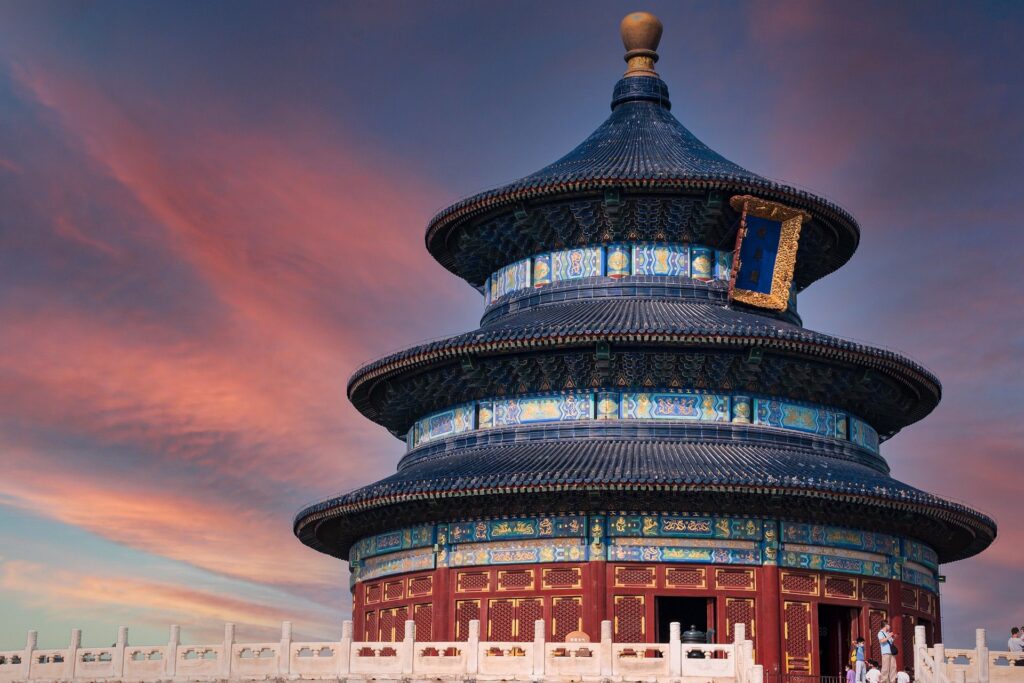
Welcome to Beijing, China’s capital that blends ancient history with modern innovation, making it one of the world’s premier travel destinations. In 2024, the city attracted 2.3 million inbound visitors, drawn to its combination of historical landmarks and contemporary attractions. Beijing is home to seven UNESCO World Heritage Sites, including the Great Wall, Forbidden City, and Temple of Heaven, offering a glimpse into China’s imperial past. But it’s not just the ancient landmarks that captivate international tourists—modern attractions like the CCTV Headquarters, the trendy 798 Art District, and the Olympic Park, which hosted the 2008 Summer and 2022 Winter Olympics, also contribute to the city’s global allure.
Digital media has significantly boosted Beijing’s global visibility. On platforms like Instagram and TikTok, hashtags such as #GreatWall and #GreatWallOfChina have amassed a combined 120 million posts, while TikTok content featuring the Great Wall alone has garnered over 175 million views. Meanwhile the #ForbiddenCity hashtag has reached over 500 million views on TikTok, reflecting the widespread fascination with the city’s historical sites. With over 7 million posts using the hashtag #Beijing and popular searches like “Beijing Day Trip”, “Great Wall tours”, and “Hutong experiences”, social media plays a key role in highlighting the city’s rich cultural landmarks. Meanwhile, food-related queries such as “Peking Duck” and “Beijing street food” reflect the city’s vibrant culinary scene, making it a must-visit destination for history enthusiasts and food lovers alike.
On platforms like YouTube, videos about “Beijing in 48 hours,” “Beijing nightlife,” and “Hidden Gems in Beijing” frequently trend, often featuring drone footage of the city’s iconic skyline and vlogs of tourists exploring lesser-known cultural sites.
Beyond social media, Beijing’s international recognition is bolstered by tour companies offering a range of cultural travel packages like Intrepid Travel, which was recognized by TIME Magazine as one of the Top 100 Most Influential Companies in 2023. These packages often blend visits to historical landmarks with authentic local experiences like Hutong bike tours, catering to travellers who seek a deeper connection with Chinese culture.
Beijing’s rise as a tourism hub is also supported by strategic policies like the 144-hour visa-free transit, which allows visitors from over 50 countries to stay in the city for up to six days without a visa. Additionally, the Beijing Tourism Expert initiative works with global planners to provide in-depth knowledge of the city’s attractions, enhancing the overall visitor experience. Combined with modern transportation and a range of foreign-language services, these efforts make Beijing increasingly accessible and appealing for international tourists.
SHANGHAI
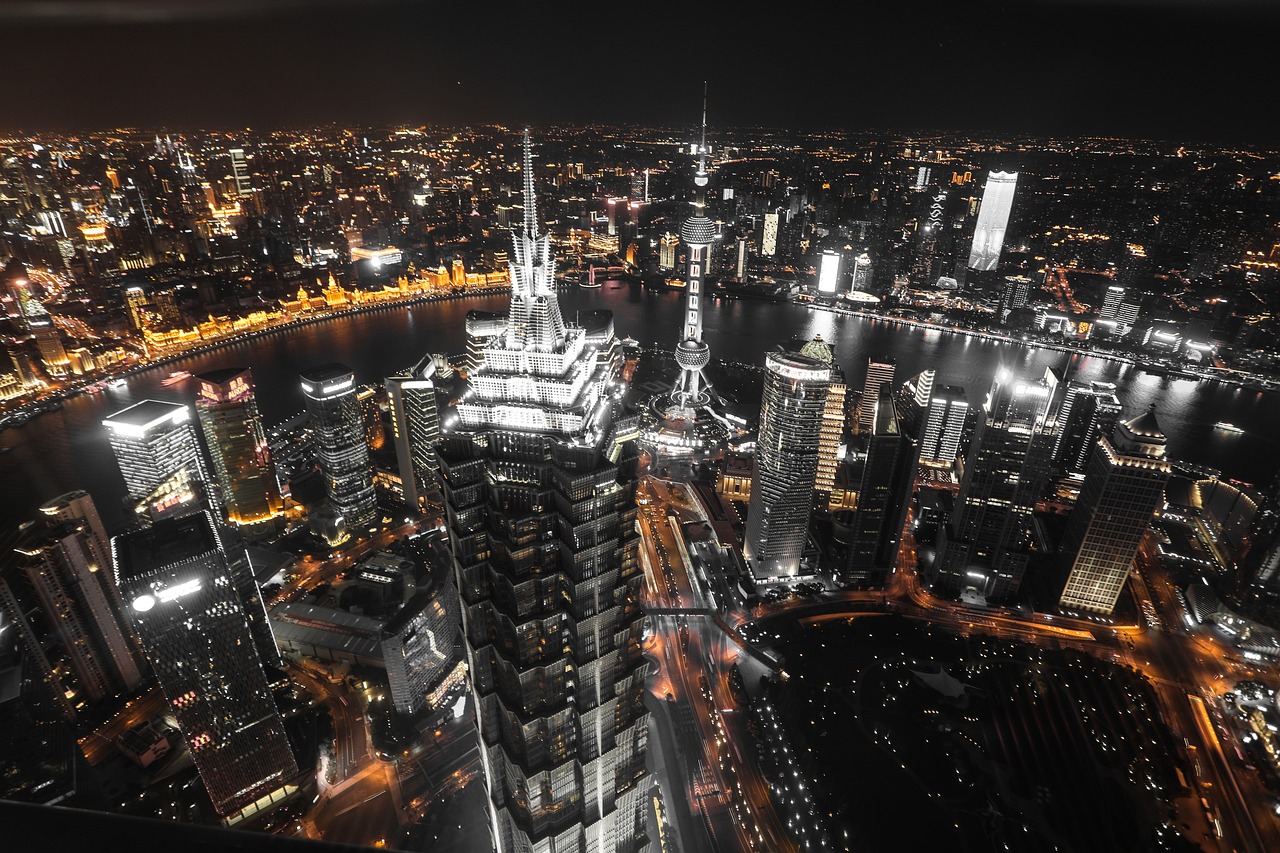
Shanghai, China’s vibrant global financial hub, not only boasts one of the world’s most iconic skylines but also continues to grow as a top global destination. The city’s worldwide influence extends far beyond its financial and cultural significance, thriving especially on social media with more than 12 million posts.
Shanghai’s rising global popularity has led foreign content creators to develop viral sounds that voice “Lujiazui Dao Le (Arrived at Lujiazui)” and “Ladies and Gentlemen, welcome to Shanghai, a super metropolis”. With thousands of videos utilizing these catchy phrases, influencers highlight Shanghai’s iconic skyline, especially in Lujiazui, the city’s cutting-edge financial district. These viral trends have garnered millions of views, further showcasing Shanghai’s fusion of modern architecture and global appeal, making it a magnet for both digital creators and tourists.
In addition to these viral phrases, futuristic sounds on TikTok have become synonymous with Shanghai’s sleek skyline and urban scenes. Creators often pair these sounds with visual content showcasing the Oriental Pearl Tower, Shanghai Tower, and the bustling streets of Nanjing Road. Chinese songs have also gone viral on TikTok, with the track “No Reason” becoming particularly iconic for China travel content, amassing over 300,000 posts. For Shanghai, this song is frequently used to highlight the city’s cultural and traditional experiences. Influencers pair it with scenes of enjoying Xiao Long Bao at Yu Garden, walking along Wukanglu during the autumn bloom, admiring the golden glow of Jing’an Temple, and capturing panoramic views of The Bund.
This social media appeal is backed by real-world numbers, with Shanghai seeing 3.64 million international visitors and 326 million domestic tourists in 2023 alone, generating over $6 billion in tourism revenue. The first half of 2024 saw an even more impressive 191.5% increase in inbound foreign visitors, solidifying Shanghai’s reputation as a must-visit city for global travellers.
Shanghai is renowned not only for its futuristic skyline and cultural landmarks but also for its foreigner-friendly environment. Navigating the city is effortless due to its extensive subway system, the second largest in the world, with English signage and multilingual announcements making public transport accessible for international visitors. For added convenience, the Maglev train, the fastest commercial high-speed train globally, connects Shanghai Pudong Airport to the city centre in just minutes. Additionally, the 144-hour visa-free transit policy allows tourists to explore Shanghai and nearby Jiangsu and Zhejiang provinces, offering hassle-free travel through this vibrant region.
CHONGQING
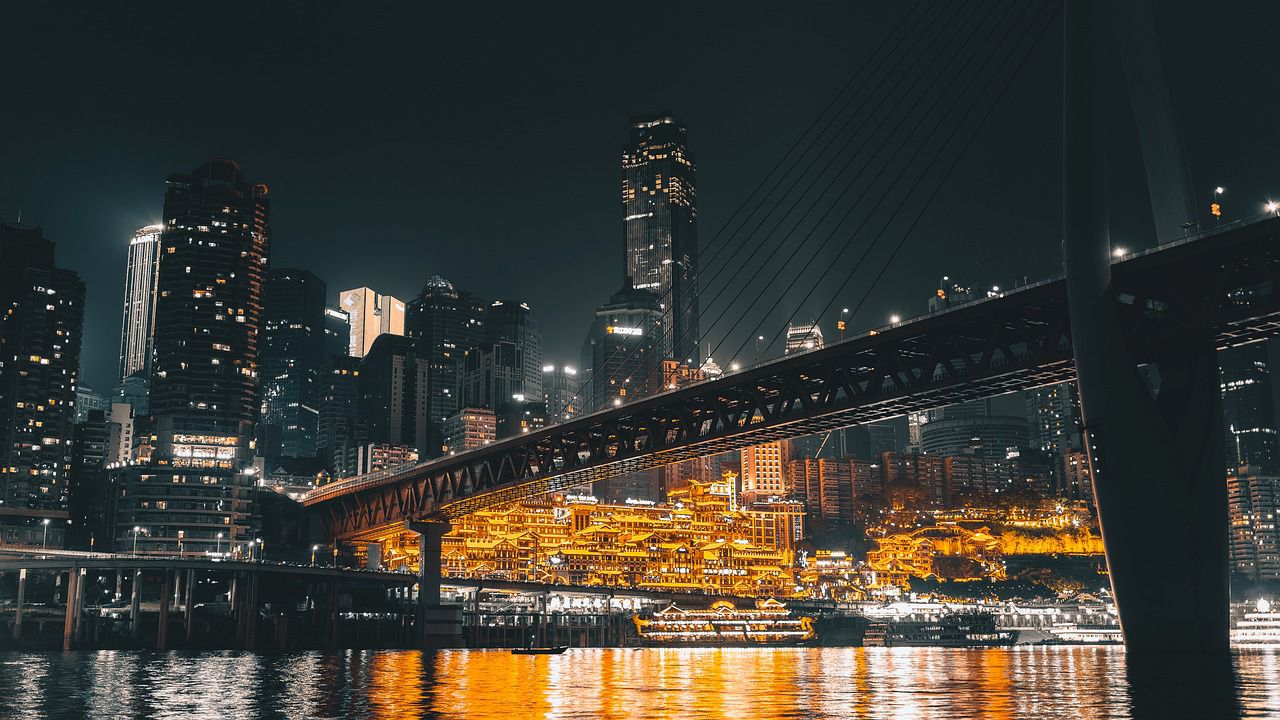
Chongqing, also known as China’s “Cyberpunk City” on social media platforms like TikTok, is one of the most visually striking and futuristic destinations in the world. With hashtags like #ChongqingCityLevels and #CyberpunkCity gaining immense popularity with more than 700,000 posts, creators have posted countless videos showcasing the city’s unique and captivating vertical layout.
It’s no surprise that Chongqing is such a popular destination. In 2023, the city was ranked among the Top 10 cities for visitor satisfaction in China and for four consecutive years, Chongqing has secured its position as one of China’s top three most developed tourism cities, alongside Beijing and Shanghai. Factors such as tourist numbers, revenue, transportation infrastructure, and visitor experience were key in this recognition and in 2020, the city hosted an impressive 64 million overnight trips, highlighting its broad appeal to both domestic and international tourists.
Influencers and travellers online frequently showcase Kuixinglou Square and the Chongqing Metro as two of the city’s most viral attractions. The metro, specifically the Liziba station, has gone viral on TikTok for its extraordinary design, with trains passing directly through a residential building. Similarly, Kuixinglou continues to amaze any visitor by its multi-level architecture, where standing on the “ground floor” can mean you’re actually on the 22nd floor. In addition, Chongqing’s renowned hotpot cuisine culture, with Pipa Yuan, the world’s largest hotpot restaurant perched on a mountainside, has become so iconic that viewers can identify the city just by recognizing the skyline views from this popular dining spot.
Hongya Cave, a favourite attraction among tourists, lights up in neon after sunset, creating a dazzling scene often compared to “Spirited Away.” Many visitors capture the moment from Qiansimen Bridge, waiting for the lights to come on, showcasing the cave’s magical transformation.
Chongqing is becoming increasingly foreigner-friendly, with English signage available in many areas and services catering to international visitors. For short-term travelers, the 144-hour visa-free transit policy offers a convenient way to explore Chongqing Municipality when arriving through Chongqing Jiangbei International Airport, making the city an accessible destination for global tourists.
ZHANGJIAJIE
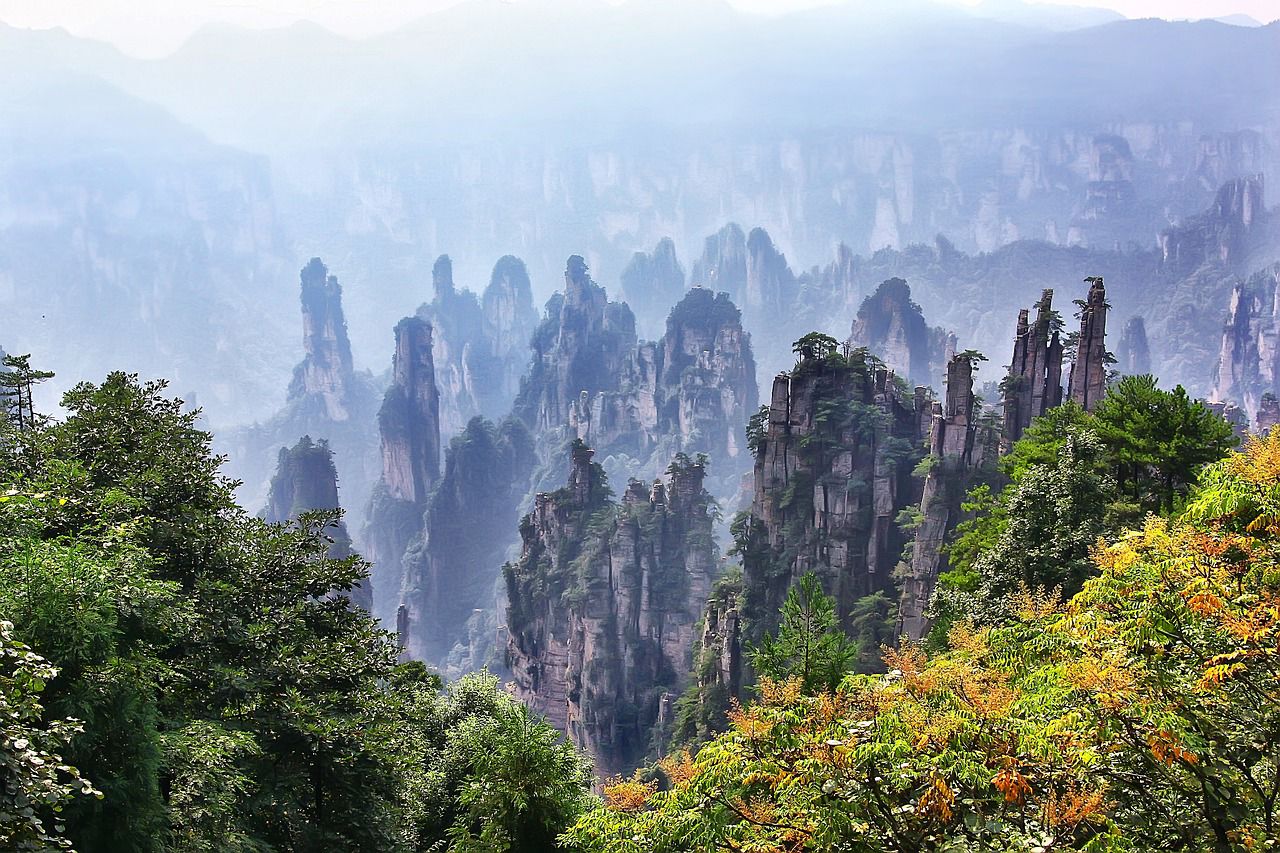
Zhangjiajie, globally recognized for its “Avatar Mountains,” has become a top destination for both nature lovers and adventurers. Its striking quartz-sandstone pillars, which famously inspired the floating mountains in the movie Avatar, continue to draw millions of visitors annually. In 2023, the Wulingyuan Scenic Area, a UNESCO World Heritage Site, saw an impressive growth, welcoming 15.9 million tourists, a 109% increase from the previous year.
Zhangjiajie’s stunning landscapes have become a viral sensation on social media, with over 250,000 posts showcasing its breathtaking scenery. The Hallelujah Mountain, famously known as the Avatar Mountains where part of the movie was filmed, is one of the most popular features in these posts. Alongside these stunning peaks, the Zhangjiajie Grand Canyon Glass Bridge has become one of the region’s most viral attractions. Recognized by CNN as one of the 12 Most Spectacular Bridges in the World, the bridge stretches 430 meters across a canyon and sits 400 meters above the valley floor, offering adventurers a thrilling skywalk experience.
In addition to its natural wonders, Zhangjiajie’s cultural appeal shines through its ancient towns, Fenghuang and Furong, which together have more than 70,000 posts on social media. Videos highlighting their fairylike charm, such as Furong’s stunning waterfall and Fenghuang’s riverside stilt houses, often gather tens of thousands of views, with commenters praising the towns’ peaceful beauty and expressing a longing to visit.
With 910,000 inbound visits in the first half of 2024— the highest in the province—Zhangjiajie continues to solidify its reputation as a world-class tourist destination, while fostering international cultural exchange and tourism innovation. The city also hosted the 2024 Zhangjiajie International Tourism Innovation Week, attracting over 200 experts and 3,000 professionals from around the world. The event highlighted key discussions on tourism’s future, including rural revitalization, talent development, and wellness vacations, emphasizing Zhangjiajie’s role in connecting China’s tourism industry to international markets.
With a 72-hour visa-free transit policy available to visitors from over 50 countries, Zhangjiajie and the surrounding areas in Hunan Province offer an excellent option for a brief stopover without the need for a full visa. This policy allows travellers to enter through Changsha Huanghua International Airport and explore Hunan Province, before continuing to a third destination, making it a convenient addition to any travel itinerary.
XI’AN
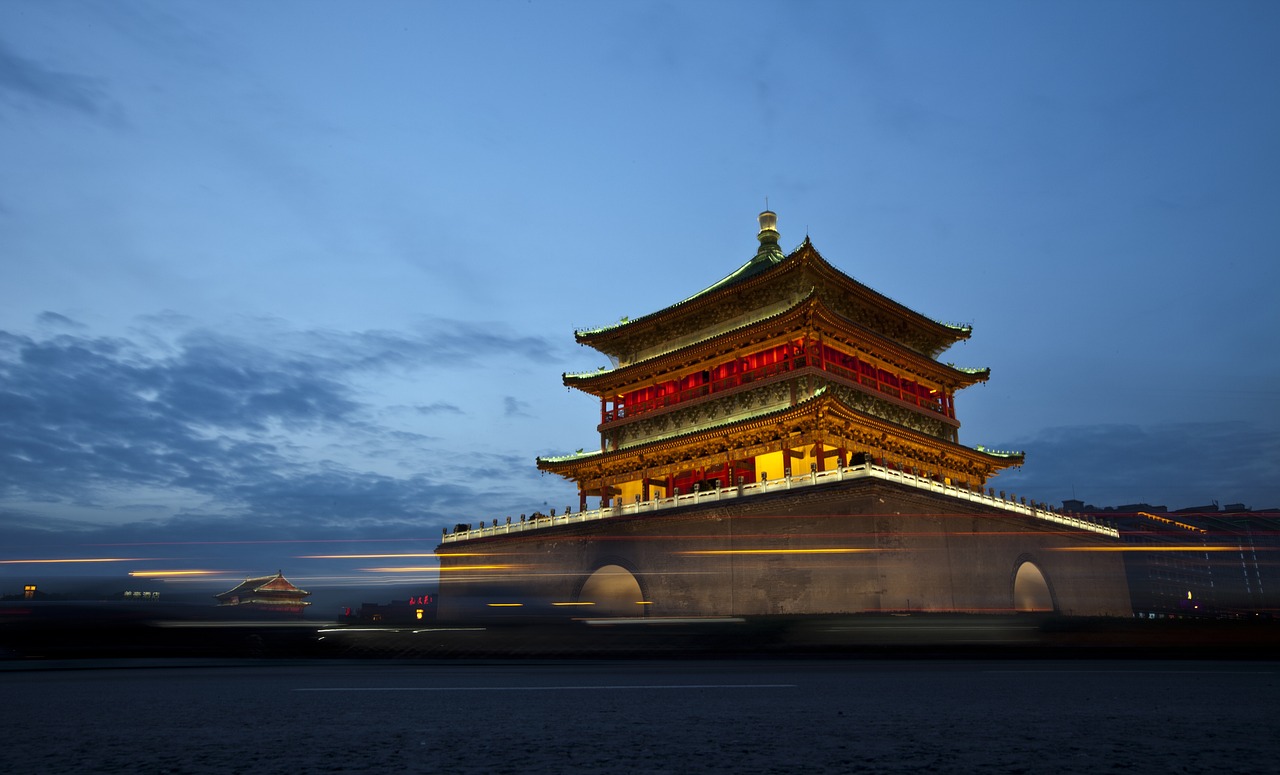
Xi’an, one of China’s most historically significant cities, is known as the starting point of the Silk Road and the home of the world-renowned Terracotta Warriors. It is rich in cultural heritage, featuring ancient architecture, vibrant local markets, and mouthwatering cuisine. The city is best known for its incredible historical attractions, home to six UNESCO World Heritage sights: the world-famous Terracotta Army, Weiyang Palace, Daming Palace, Big Wild Goose Pagoda, Small Wild Goose Pagoda, and Xingjiao Temple Pagoda. Beyond its historical appeal, Xi’an also ranked second in China for tourist satisfaction in 2021 and welcomed more than 132,500 inbound travellers in the first half of 2024.
From January to April 2024, Xi’an welcomed over 132,500 international travellers, reaffirming its position as one of China’s top 10 cities for tourist satisfaction. The Terracotta Warriors, Xi’an’s most iconic historical site, has welcomed over 150 million visitors since opening to the public in 1979. Last year alone, 11.2 million people visited the site, highlighting the timeless appeal of this archaeological wonder.
In addition to its historical appeal, Xi’an has a strong social media presence. Over 600,000 posts on Instagram feature #Xian while #TerracottaWarriors has almost 100,000 on its own. The hashtag #OldXian has over 100,000 posts, reflecting traveller’s deep interest in the city’s rich history. Culinary enthusiasts are also drawn to the city, with popular searches for “Xian Famous Foods” highlighting its popular and traditional dishes such as Roujiamo and Yangrou Paomo.
International tourism initiatives like the Xi’an Silk Road International Tourism Expo have also amplified the city’s global presence, attracting international partnerships and promoting its cultural and historical appeal on a global stage. The 2023 event alone secured 29 major culture and tourism projects, with a combined investment of 14.35 billion yuan ($2 billion).
As a significant transportation hub, Xi’an is easily accessible by high-speed rail and international flights, making it a convenient destination. Furthermore, travellers can take advantage of the 144-hour visa-free transit through Xi’an Xianyang International Airport, allowing them to explore the city’s historical and cultural treasures without the need for an extended visa process.
SHENZHEN

Shenzhen, often dubbed as China’s “Silicon Valley,” is experiencing a surge in inbound tourism, which saw 1.28 million foreign trips made in 2023. A major factor behind this increase is Shenzhen’s international connectivity, its status as a tech and innovation hub, and the expansion of the 144-hour visa-free transit policy, which allows travellers from over 50 countries to visit the city without a visa for up to six days.
Shenzhen has consistently been a top choice for international visitors, which saw a record of 12 million foreign tourists in 2017. Travelling within the city has become even easier as Shenzhen has introduced the “City Walk” initiative to enhance urban tourism, providing visitors with a flexible, self-guided exploration experience. The Shenzhen City Walk electronic map includes 50 recommended destinations chosen from over 300 locations through a public vote, which received 1.28 million votes. The map covers five major themes, offering tourists routes that highlight everything from Shenzhen’s tech hubs and ecological parks to its ancient villages and cultural landmarks. Each destination is accompanied by a detailed guide, featuring route stops and suggested activities, making it easier for visitors to tailor their itineraries to their interests and discover Shenzhen at their own pace.
On social media, Shenzhen is gaining momentum with over 450,000 posts on platforms like Instagram under the hashtag #Shenzhen, featuring everything from its futuristic skyline to its thriving food scene. Influencers often highlight viral trends such as shopping experiences at Huaqiangbei, one of the world’s largest electronics markets, and Shenzhen Bay Park for its spectacular views. Travel vlogs showcasing the city’s high-tech innovation parks and green spaces, such as the urban Shenzhen Talent Park, frequently gather millions of views on TikTok.
In addition to its status as one of China’s major tech and innovation hubs, Shenzhen has recently enhanced its tourism offerings by launching the Shenzhen World Exhibition and Convention Center, one of the largest venues of its kind globally. This modern addition has further boosted the city’s appeal for international business and leisure travellers alike. Moreover, Shenzhen’s inclusion in key initiatives such as the Greater Bay Area (GBA) Tourism Development plan is helping to attract more global visitors. By connecting with neighbouring Hong Kong and Macau, Shenzhen is playing a crucial role in creating a cohesive international tourism hub.
CHENGDU

As “the Best City to Visit in China” crowned by the UNWTO and one of the global top 17 destinations awarded by CNN, Chengdu has firmly established itself as a growing premiere tourist destination. With over 200 million visits annually from both domestic and international travellers, the city combines a unique mix of historical charm and modern allure. Known for its fast-paced innovation alongside its laid-back lifestyle, Chengdu is recognized as the happiest city in China and has also earned the title of the most secure city.
Chengdu’s appeal is amplified by its massive social media presence, with over 1.2 million posts featuring the city across platforms. When searching for Chengdu on social media, the panda is the top recommendation, followed by content on things to do, the famous bamboo fountain, shopping, and nightlife—all of which sum up the city’s allure for tourists. The Chengdu Research Base of Giant Panda Breeding remains one of the city’s biggest draws, with countless posts and videos highlighting its beloved pandas. Right after the pandas, another viral attraction is the mesmerizing bamboo fountain located in the futuristic SKP Mall. Videos of the fountain frequently go viral, with people sharing clips of its stunning display, which features towering water columns illuminated by thousands of spotlights. Alongside the pandas, the bamboo fountain has become one of Chengdu’s most talked-about attractions online.
Chengdu, historically pivotal as a starting point of the Ancient Southern Silk Road, is now a key player in China’s Belt and Road Initiative (BRI). Serving as an international gateway, the city connects the New Eurasian Land Bridge, which links the Pacific to the Atlantic through extensive rail networks. The Chengdu-Europe Express Railway, launched in 2013, has positioned Chengdu as a vital logistics hub, strengthening its trade ties with 22 cities across Europe and Asia. This strategic transformation highlights Chengdu’s growing influence in global trade, tourism, and international collaboration.
Chengdu also offers the 144-hour visa-free transit policy, allowing travelers from over 50 countries to stay in the city and surrounding regions for up to six days. Visitors can enter and exit through Chengdu Shuangliu International Airport, providing convenient access for short-term international visitors. During the visa-free period, travelers can explore Chengdu and other areas within Sichuan Province, enjoying its cultural, culinary, and natural attractions without the need for a full visa.
HANGZHOU
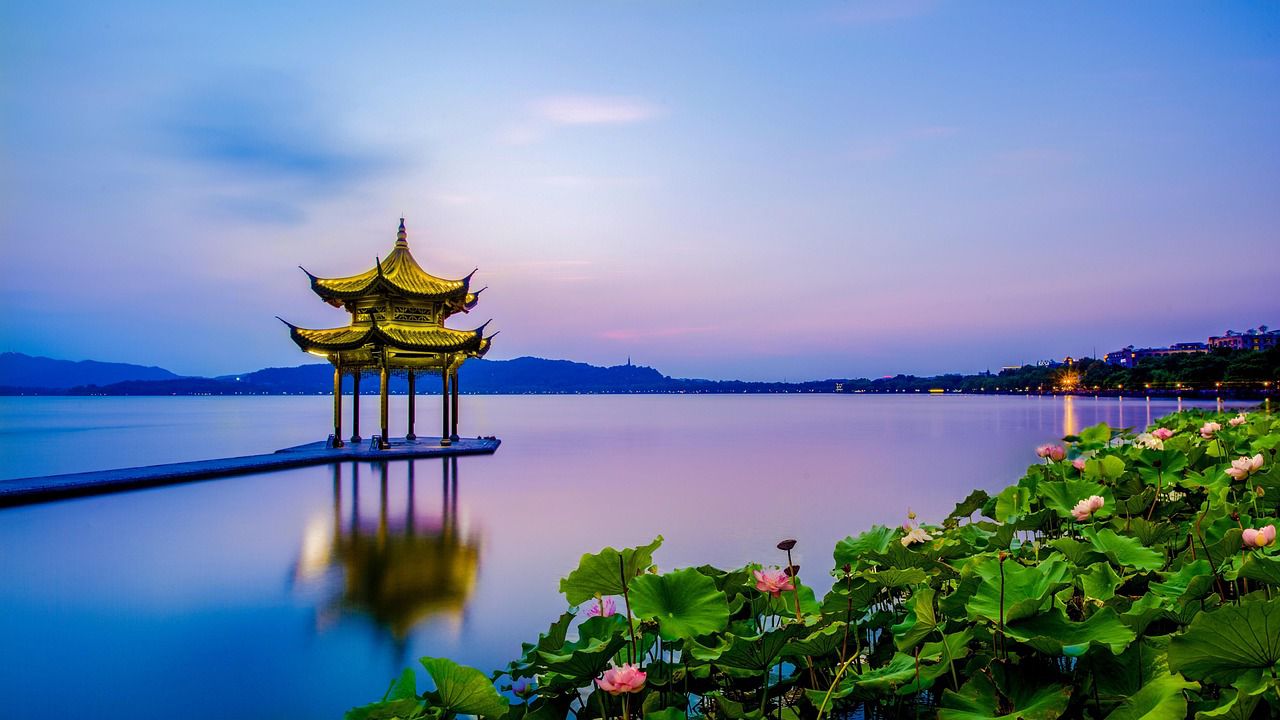
Hangzhou has rapidly emerged as a key player in China’s international tourism landscape, blending its rich cultural heritage with a modern and vibrant identity. Unlike cities like Beijing and Xi’an, which are defined by historical grandeur, Hangzhou is renowned for its focus on a relaxed, tranquil way of life. Often described as embodying “poetic leisureliness,” “slow life,” and “southern femi-beauty,” this lifestyle forms the core of the city’s identity. In 2014, Hangzhou officially embraced the concept of “the culture of living” as its cultural DNA, encapsulated in its tourism slogan, “Hangzhou, Living Poetry.” This focus on peacefulness and elegance makes Hangzhou not just a sightseeing destination, but a place where visitors can immerse themselves in a slower, more serene way of life.
In 2023, Hangzhou experienced a notable increase in foreign visitors, partly due to the newly implemented 144-hour visa-free policy. In just the first month of this initiative, the city welcomed over 5,200 visa-exempt international tourists, reflecting a substantial rise in inbound tourism.
Hangzhou’s international appeal was significantly boosted by hosting the G20 Summit in 2016 and the Asian Games in 2023. The G20 Summit positioned Hangzhou on the world stage, leading to increased global visibility and a surge in international visitors. The summit prompted significant investments in the city’s infrastructure, including transportation and public services, which have continued to benefit tourists. The exposure gained from hosting global leaders not only increased Hangzhou’s international profile but also cemented its reputation as a city that seamlessly blends modernity with ancient beauty. The 2023 Asian Games further enhanced Hangzhou’s global image, attracting visitors from across the world. It highlighted the city’s commitment to sustainability with eco-friendly initiatives, making Hangzhou increasingly popular among eco-conscious travellers. Both events reinforced the city’s commitment to promoting “living poetry”, where visitors can enjoy the city’s modern amenities while indulging in its peaceful, leisurely lifestyle.
SANYA
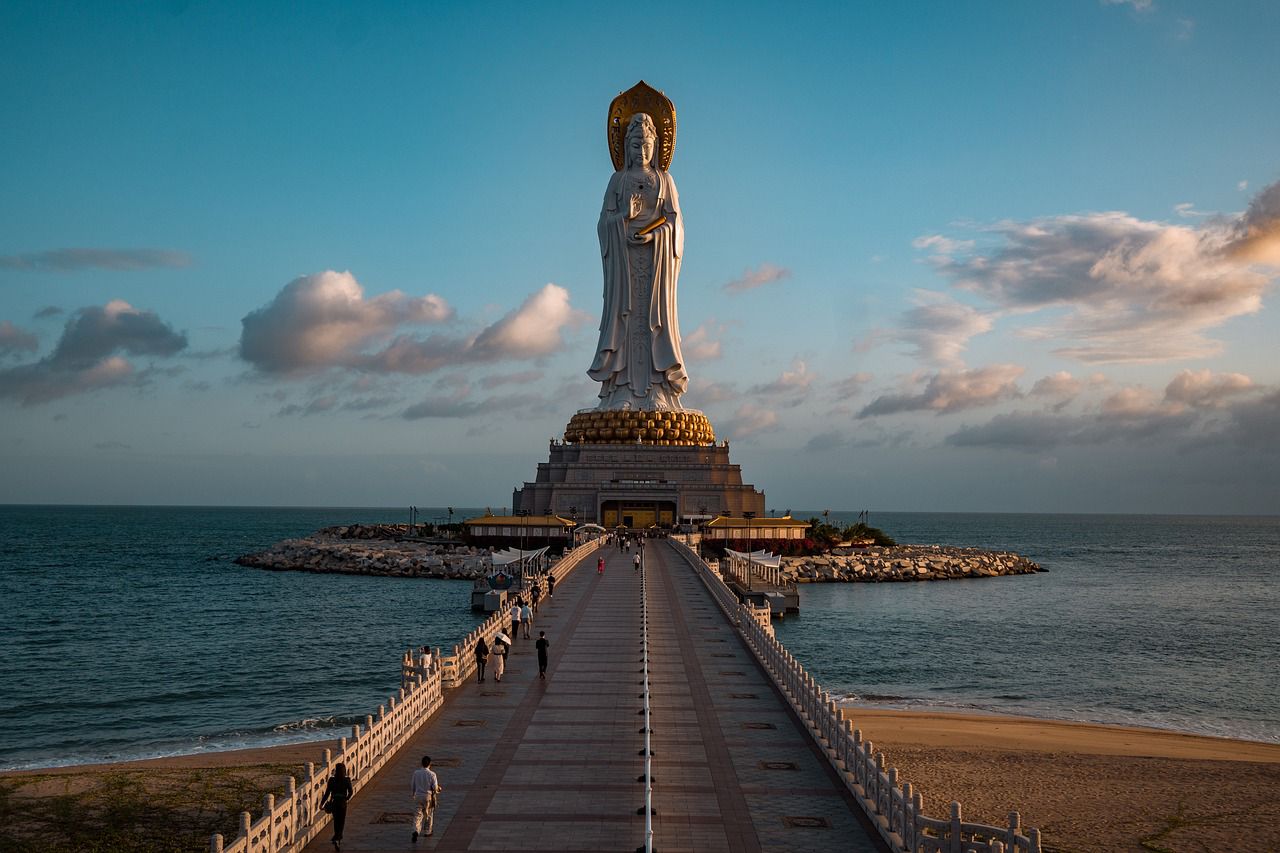
Sanya, located on Hainan Island, has become a growing destination for international tourists, known for its tropical charm and luxury appeal. In the first six months of 2024 alone, the city welcomed 319,800 international overnight tourists. One key driver of this surge is the updated visa-free policy implemented in February 2023, which allows tourists from 59 countries to enter Hainan, including Sanya, for up to 30 days without a visa. This policy applies to various travel purposes, including tourism, business, medical treatment, and sports, making Sanya even more accessible to international travellers.
Through its “Tourism+Culture” model, the city offers unique experiences such as exhibitions, workshops, and traditional performances, highlighting the island’s diverse cultural heritage. Visitors can explore Li brocade weaving, learn about ancient fishing songs, or immerse themselves in the boat-dwelling traditions. These activities not only deepen visitors’ understanding of Chinese culture but also foster international cultural exchanges, positioning Sanya as a hub for both relaxation and cultural discovery. To attract younger visitors, Sanya is increasingly promoting nighttime tourism and hosting innovative events like music festivals, concerts, and beer festivals.
On social media, Sanya’s pristine beaches and luxury resorts are frequently showcased, with popular content centred around Yalong Bay and the vibrant Nanshan Cultural Tourism Zone. More than 500,000 posts and videos circulating on Tik Tok and Instagram with the hashtag #Sanya, showcase influencers and content creators enjoying the tropical lifestyle, water sports, and even traditional Chinese medicine treatments, which are unique attractions in the city.
To support foreign tourists, Hainan province launched the “Hainan Trust Pay” app, designed to offer quality and efficient consumption experiences for international visitors. This app ensures that travellers can enjoy smooth transactions, further enhancing Sanya’s appeal as a tourist-friendly destination.
Additionally, Sanya has expanded its international connectivity by launching 16 international flight routes since July 2023, connecting the city with key regions such as Seoul, London, Moscow, and Bangkok.
The city’s efforts to foster international cooperation are also expanding, with Sanya inviting Southeast Asian travel agents to experience its high-end hotels, local cuisine, and scenic spots. Additionally, Sanya has developed “Tourism + Sports” products, blending leisure and golf, alongside marine-themed programs like island exploration, which are tailored to family tourists during summer. Through these initiatives and its visa-free policy, Sanya is cementing itself as a must-visit destination for global travellers.
URUMQI
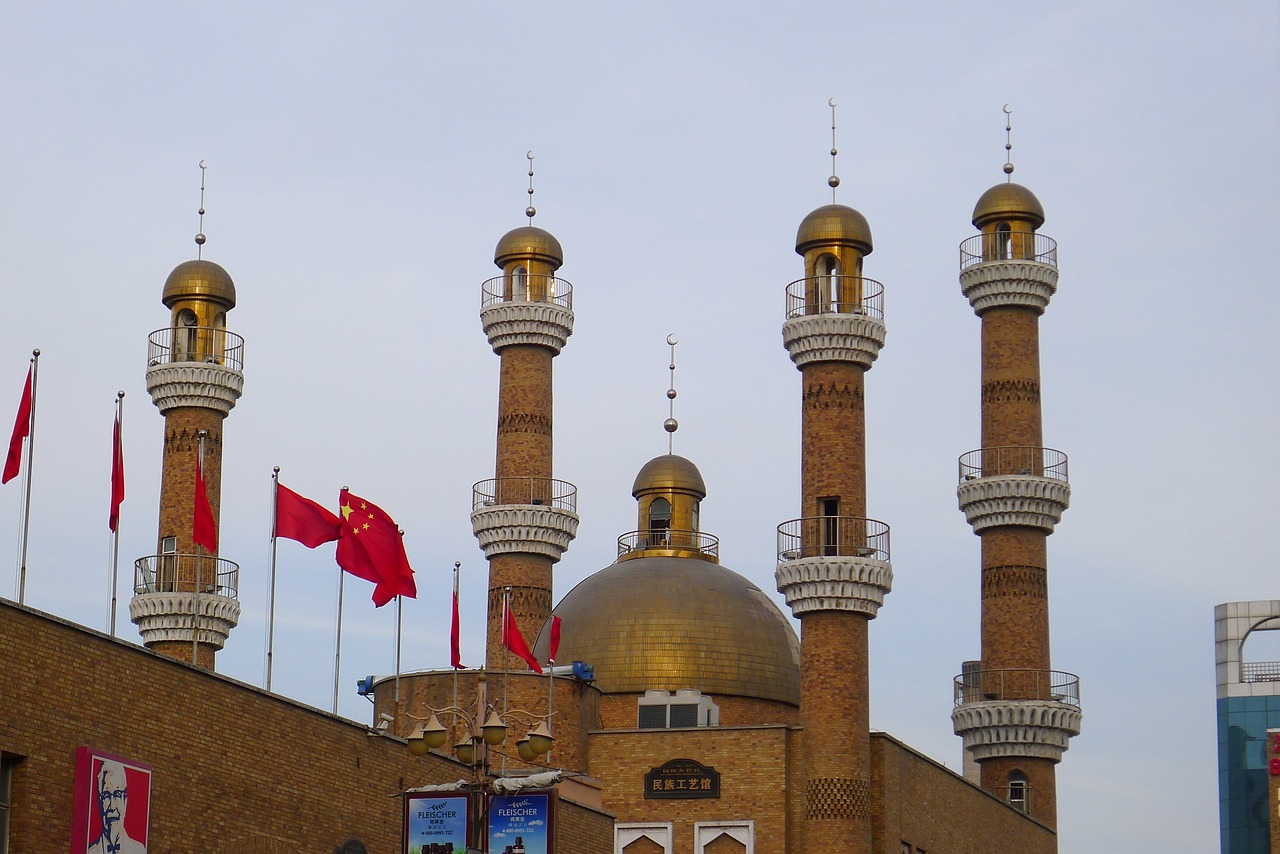
Urumqi, the capital of Xinjiang, has emerged as a key destination in China’s tourism landscape, particularly following the success of the 2023 SCO Forum ‘Year of Tourism’, which showcased the city’s rich cultural and natural heritage. In 2023, Urumqi broke records by welcoming 100 million international and domestic visitors, generating over 100 billion yuan ($14 billion) in tourism revenue. This impressive growth reflects Urumqi’s expanding role as a gateway for China’s westward opening, particularly through its connections to Central Asia via the Belt and Road Initiative.
On social media, Urumqi is gaining traction with more than 70,000 posts showcasing its stunning landscapes like the Tianshan Mountains and popular cultural experiences such as the Erdaoqiao Market, where visitors can experience the rich ethnic diversity of the region. Posts featuring the city’s unique combination of natural beauty and cultural vibrancy have become viral, especially those highlighting Urumqi’s winter activities such as skiing in the Nanshan Scenic Area, which attract both domestic and international attention.
In addition to the social media buzz, international tourism initiatives have made Urumqi more accessible. The city has established 41 new homestays in 2023, bringing the total to 324, and introduced more than 12,000 cultural activities, including concerts and traditional performances, which enhance the visitor experience. Efforts to improve transportation infrastructure, including an expanded airport and railways, have also boosted Urumqi’s appeal to global tourists.
In 2024, Xinjiang province set a goal to attract 300 million visitors, positioning itself as a growing hotspot for international travellers due to its secure environment, cultural diversity, and abundant natural resources. By March 2024, the region welcomed its first group of foreign tourists with port visas, and in the first half of the year, Xinjiang received 2,293,300 inbound tourists. Urumqi, in particular, ranked first among China’s provincial capitals in inbound tourism growth during the May Day holiday, according to Ctrip. Urumqi’s international airport plays a crucial role, with more than 100 international flights per week, connecting the city to over 10 countries, including Kazakhstan, Uzbekistan, and Tajikistan. In the first half of 2024, the airport recorded 194,881 inbound and outbound passengers, underscoring the region’s increasing accessibility and popularity.
GUILIN
Guilin, celebrated for its iconic karst landscapes, is a must-visit destination for nature lovers. The city, often referred to as “The best Landscape under Heaven”, is surrounded by jagged limestone peaks, scenic rivers, and picturesque villages, making it a peaceful escape from China’s bustling metropolises. Guilin has experienced a surge in inbound tourism in 2024, thanks to its well-developed infrastructure, high-quality services, and diverse tourism offerings. As of June 2024, international visitors reached 375,300, an increase from 315,700 in May. The city further established itself on the global stage by hosting the UNWTO/PATA Forum in 2023, positioning Guilin as a key player in international tourism.
On social media, Guilin enjoys significant global attention, with over 250,000 posts and videos showcasing the city’s iconic landscapes. Influencers frequently participate in viral trends like “Where is this internet-famous spot located?” which often reveals Guilin’s breathtaking rivers and karst mountains. Popular posts feature the serene Li River, bamboo rafting adventures, and the stunning views from Xianggong Hill, captivating audiences worldwide. For bamboo rafting, the most popular route is between Yangdi Village and Xingping Town, known for its calm waters and scenic views, which include the famous Nine Horse Fresco Hill and the Yellow Cloth Shoal, featured on the Chinese 20 Yuan note.
One of Guilin’s most famous sites is the Longji Rice Terraces. These winding terraces, resembling the scales of a dragon, have been carved into the hillsides over centuries and offer stunning views, especially when the fields are flooded or filled with golden rice stalks.
Guilin is also known for its rich culinary offerings. The most famous local dish is Guilin rice noodles and for more adventurous eaters, Stuffed Li River Snails from nearby Yangshuo are a must-try. These snails are stuffed with a spicy mixture of minced pork and garlic, creating a bold and unique flavour that highlights the region’s traditional cuisine.
With a 72-hour visa-free transit policy available to visitors from 51 countries, Guilin offers an ideal opportunity for a short stopover en route to a third destination. This policy enables travellers to explore the city’s renowned natural landscapes and rich cultural heritage without the need for a full visa, making it a convenient addition to any travel itinerary.
QINGDAO
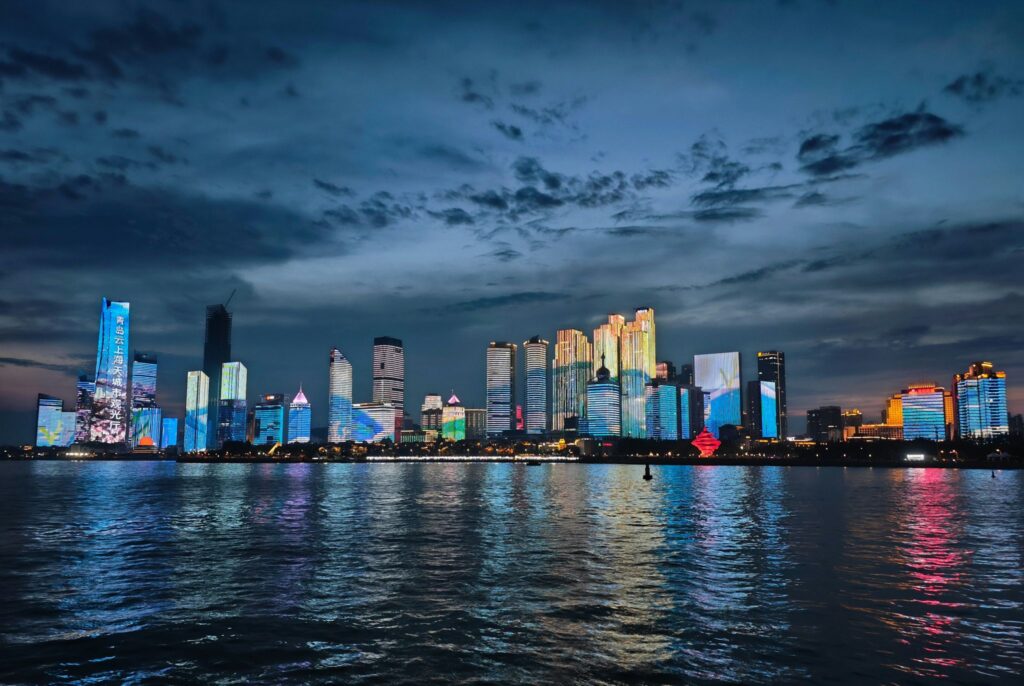
Qingdao, a coastal gem in Shandong province, has been named the 2024-25 ‘SCO Tourism and Cultural Capital’, reinforcing its growing global presence as a major hub for international tourism. Known for its rich history, scenic landscapes, and vibrant beer culture, Qingdao plays a crucial role along the 21st Century Maritime Silk Road. The city is poised to attract a surge of international visitors eager to explore its unique blend of natural beauty, local delicacies, and cultural heritage.
On July 12, 2024, Qingdao officially launched the 2024-25 SCO Tourism and Cultural Capital event, alongside the start of the 2024 SCO Summer Event, which will feature nearly 100 distinctive activities celebrating cross-cultural dialogue, tourism development, and cultural exchange. This designation has significantly boosted Qingdao’s global appeal, particularly among travellers from SCO member countries.
The city is renowned for its blend of European-style architecture, natural beauty, and maritime history. Popular attractions like Zhanqiao Pier, Tsingtao Beer Museum, and the Qingdao Polar Ocean World draw millions of visitors each year, particularly during the peak tourism season from July to August. The Qingdao International Beer Festival, often referred to as Asia’s largest beer festival, is another major event that brings in international tourists, showcasing over 2,000 beer varieties from more than 40 countries.
Qingdao’s presence on social media continues to grow, with more than 388,000 posts under hashtags such as #Qingdao and #TsingtaoBeer. Viral trends frequently focus on the city’s scenic beaches, vibrant beer culture, and colonial-era architecture. The Qingdao International Beer Festival generates a lot of buzz, with influencers from China and abroad showcasing the event’s lively atmosphere, beer gardens, and performances.
To make travel more accessible, Qingdao has implemented the 144-hour visa-free transit policy, allowing travellers from over 50 countries to stay for up to six days without a visa. Additionally, Qingdao’s improved international connectivity, with direct flights from major global cities, has contributed to its rising status as a key destination for international tourists.
KAIFENG
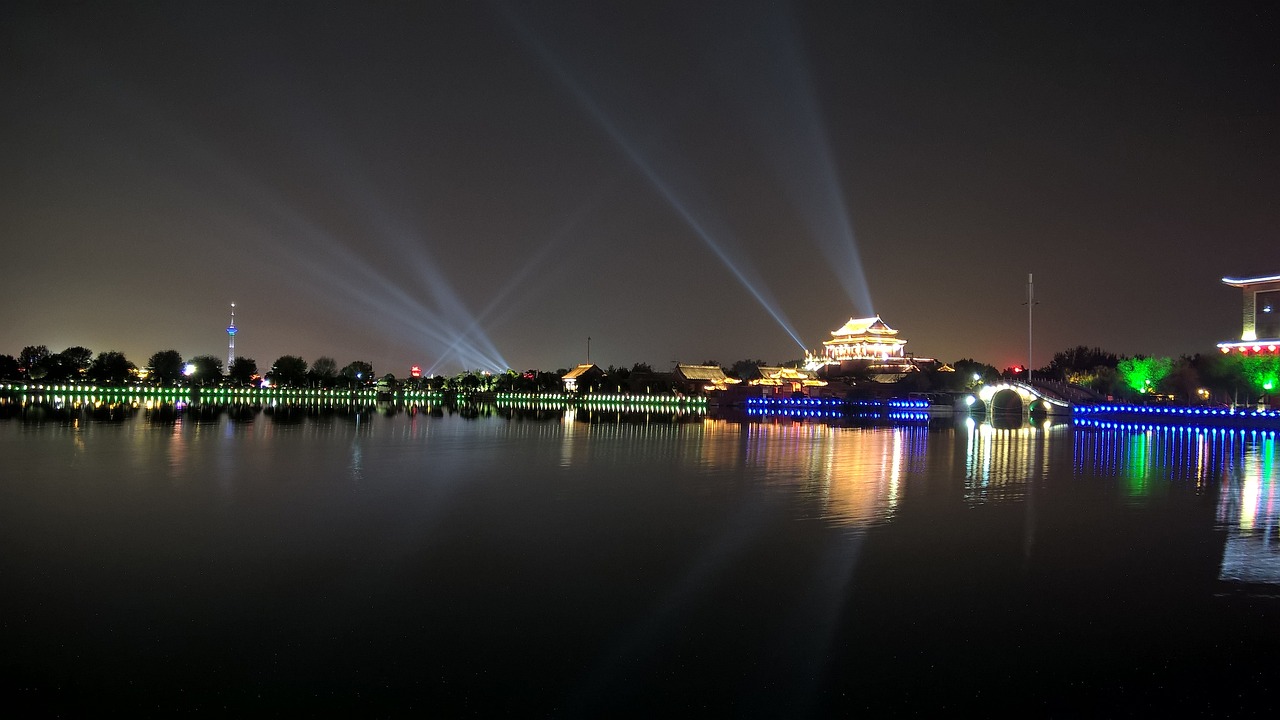
Kaifeng, one of China’s Eight Ancient Capitals, has served as the nation’s capital seven times throughout its long history, most famously during the Northern Song Dynasty. Known for its deep cultural and historical significance, Kaifeng has evolved into a vibrant destination for global tourists, blending its rich heritage with modern tourism experiences. In 2024, Kaifeng continued promoting the Kaifeng Chrysanthemum Festival, a key event attracting tourists, due to its cultural significance and vibrant displays of traditional Chinese horticulture.
Kaifeng is leveraging its status as a stop along the Grand Canal, a UNESCO World Heritage Site, by promoting cultural tourism through interactive and educational attractions like the Millennium City Park, where visitors can witness recreations of historical Song Dynasty life. This combination of cultural depth and engaging experiences has made the city increasingly popular on social media, with over 60,000 posts tagged under #Kaifeng, where influencers share their experiences of the city’s ancient architecture, night markets, and traditional performances.
To strengthen its global appeal, Kaifeng is enhancing its infrastructure and fostering international partnerships, particularly through the Zheng-Bian Integration plan. This initiative aims to create seamless travel links between Kaifeng and the provincial capital Zhengzhou, with upgraded high-speed rail and intercity bus routes, making it easier for international tourists to explore both cities. By merging Kaifeng’s historical charm with Zhengzhou’s modern infrastructure, the region offers a more diverse and accessible experience for visitors. This integration has been crucial in boosting Kaifeng’s tourism profile, attracting international tourists who are looking to experience more of Henan Province in one trip.
To make the city more accessible, Kaifeng has benefitted from the 144-hour visa-free transit policy, enabling tourists to explore the city and other parts of Henan Province without needing a full visa for up to six days.
KUNMING
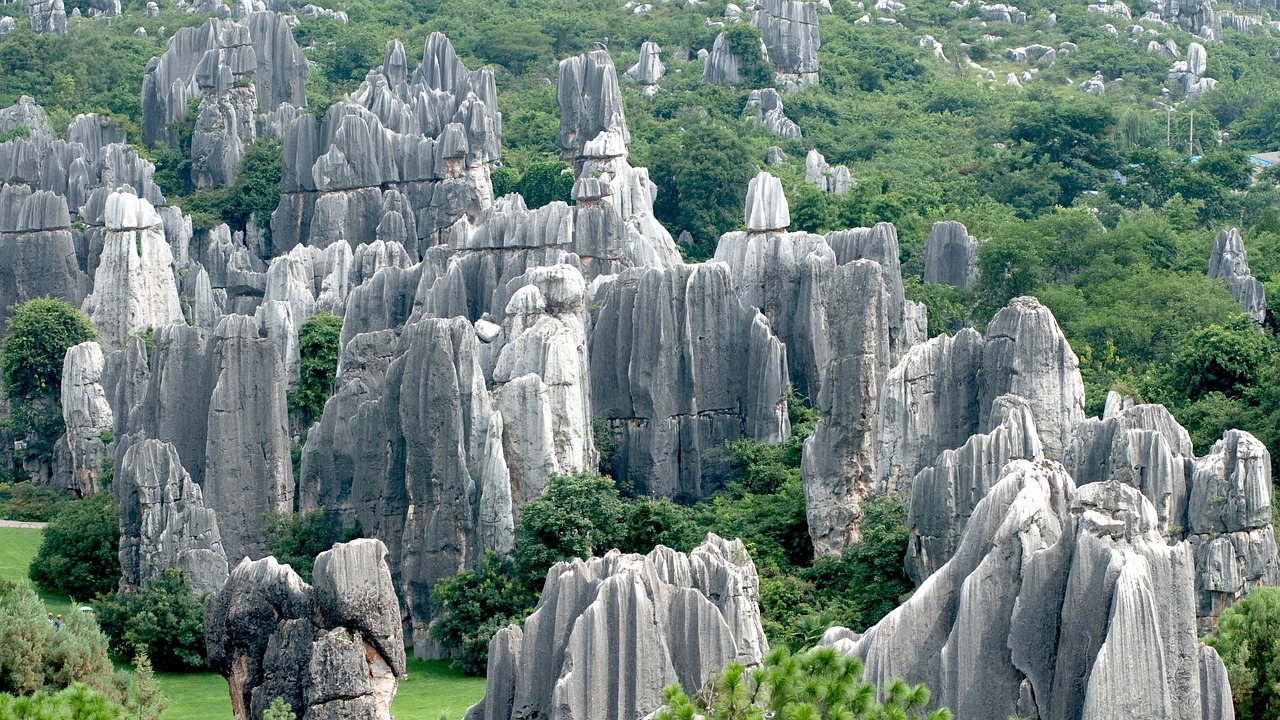
Kunming, the capital of Yunnan Province, is a rising star in global tourism, often referred to as the “City of Eternal Spring” for its mild climate year-round. The city is not only renowned for its pleasant weather but also for its rich cultural heritage and stunning natural attractions, making it a top destination for international travellers. Kunming has consistently been ranked among China’s top 20 tourist destinations, and in 2023, the China International Travel Mart, held in Kunming, attracted over 800 international travel agents from more than 70 countries, showcasing the city’s growing appeal as a global tourism hub.
Kunming has seen a growing presence on social media, particularly through hashtags like #Kunming and #StoneForest, a UNESCO World Heritage Site. With more than 150,000 posts on Tik Tok and Instagram, creators highlight Kunming’s natural beauty by posting immersive short videos that capture sunrise hikes through the Stone Forest or sweeping views of the terraced Yuanyang Rice Fields. One of the most popular formats includes travel vlogs that take viewers on scenic journeys through Kunming’s diverse attractions, such as the vibrant Green Lake Park or the peaceful Yunnan Ethnic Village.
The city is also home to a diverse array of captivating attractions such as the Dongchuan Red Land, with vivid red soil that creates a surreal landscape perfect for photography. In addition to nature-focused content, searches for “Kunming Famous Foods” have become increasingly popular, driven by interest in local Yunnan dishes such as crossing-the-bridge rice noodles and wild mushroom hot pot
Kunming also capitalizes on eco-tourism and cultural travel, hosting events like the Shangri-La Cultural Tourism Festival, which drew over 19 million visitors to the region by August 2024.
The 144-hour visa-free transit policy has been extended across Yunnan Province, allowing international travellers to explore not just Kunming, but also other key destinations such as Lijiang, Yuxi, Pu’er, Chuxiong, Dali, Xishuangbanna, Honghe, Wenshan, and more. This expansion provides greater flexibility for tourists who wish to experience the diverse cultural and natural landscapes of Yunnan.
GUIYANG
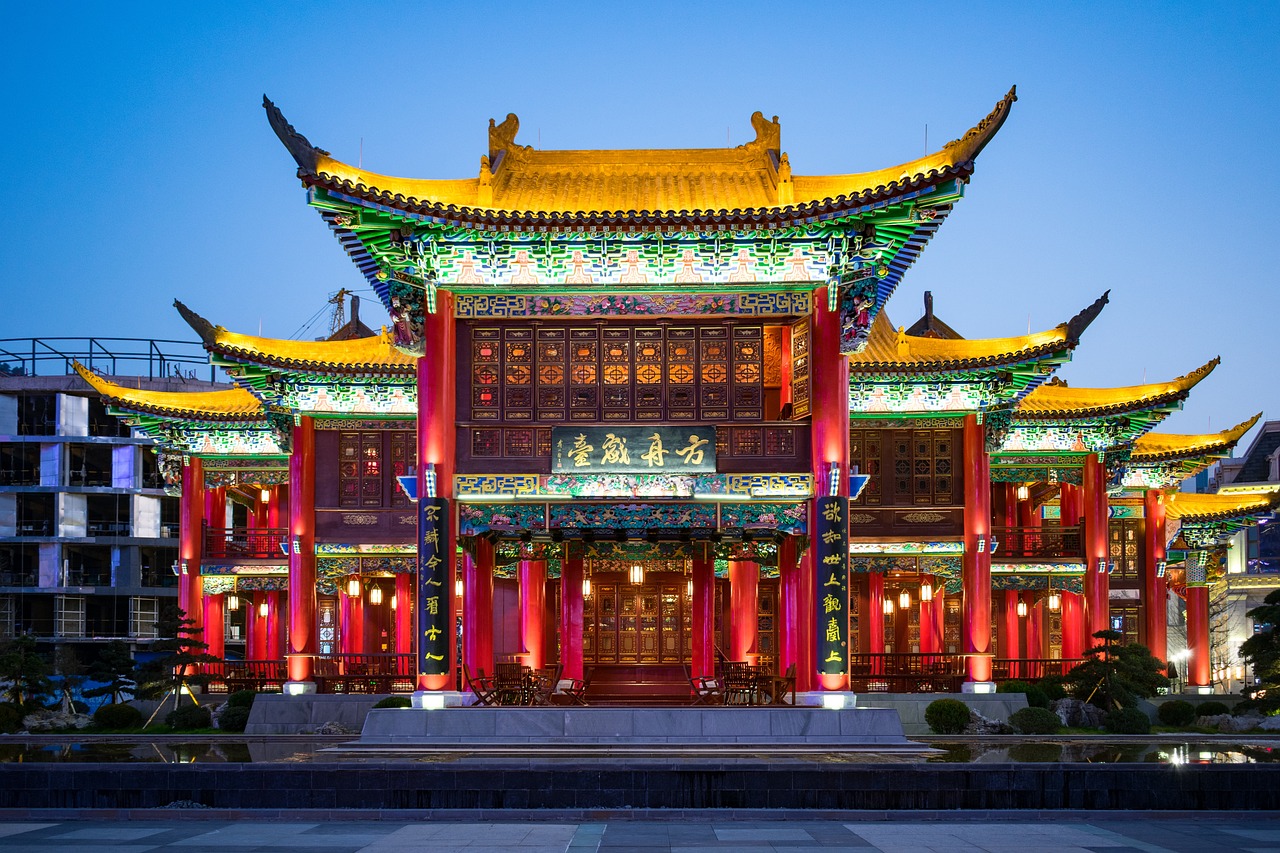
Guiyang, a transit hub for travellers in Southwest China and the capital of Guizhou province, is rapidly becoming a sought-after destination. Known for its mix of ethnic diversity, stunning natural landscapes, and modern urban appeal, the city offers a unique travel experience. According to Ctrip’s 2024 Year of the Dragon Spring Festival report, Guiyang saw a 105% increase in tourism orders, with ticket sales surging nearly sixfold. This year, the city surpassed 100,000 international visitors, exceeding last year’s total. To accommodate this growth, Guiyang Longdongbao International Airport launched several international routes, including flights to Bangkok, Macao, Milan, and Osaka, further enhancing its accessibility.
Guiyang has rapidly developed into a unique destination combining eco-tourism, agri-tourism, and modern urban experiences. In 2024, the city continues to enhance its international appeal with the launch of new tourism products that focus on integrating agriculture, culture, and nature. One of the city’s standout initiatives is the promotion of rural tourism, with over 700 rural homestays now available, offering visitors a chance to experience traditional life in the surrounding countryside. Popular sites like Yanglongsi town in Xifeng county have become tourism hubs, blending agriculture with cultural heritage.
Guiyang is also known for its festivals, including the Guanshanhu Lantern Festival and Dragon Boat Festival, both of which attract international tourists with their vibrant cultural displays. These festivals, frequently shared on platforms like WeChat and Douyin (TikTok), have helped Guiyang increase its presence on social media, with influencers showcasing local customs and scenic spots like Qianling Park and Hongfeng Lake.
Recent efforts have also been directed towards integrating tourism with environmental sustainability, offering outdoor activities like mountain biking, hiking, and exploring the region’s famous karst landscapes. The city has secured a spot among China’s top 10 “dark horse” tourism destinations, with influencers frequently showcasing its cultural and natural beauty on platforms like Instagram, Tik Tok, and YouTube.
From an accessibility perspective, Guiyang has leveraged the 144-hour visa-free transit policy, allowing travellers from 53 countries to explore the city and surrounding areas without the need for a visa for up to six days. This policy, along with the expansion of high-speed rail and international flight connections, has significantly boosted inbound tourism from countries such as Australia, Poland, and Southeast Asia.
Conclusion: The Top 15 Chinese Cities in 2024
These 15 cities all combine excellent overseas influence and inbound tourism. If you’re looking to plan a trip to China – whether you’ve been a dozen times or this is your first – then these destinations should be at the top of your list.

